FROM WINDSOR KNOT TO FLIP FLOPS - A TALE OF TWO CULTURES
For the last half century, a visitor could spot the private equity professional at fifty paces: double-breasted suit, side parted hair, and a Hermès tie cinched in an impeccable Windsor knot. Their world was quiet, exclusive and, frankly, rather pleased. Partners cultivated relationships in oak-panelled dining rooms; junior staff learnt on the job, shoulders brushing those of veteran rainmakers on planes or in data rooms.
Meanwhile, across town, a very different breed was emerging. Venture capitalists took meetings in converted warehouses smelling faintly of coffee and optimism. They pitched founders in hoodies, not CFOS in Turnbull & Asser. Their uniform? T‑shirts sporting ironic unicorn logos, trainers that cost more than a Savile Row blazer and, crucially, an irrepressible appetite for speed.
For decades, the two tribes tolerated each other. PE raised multi‑billion funds to leverage, optimise and exit steady businesses. VC sprayed smaller cheques across hundreds of moon‑shots, hoping a handful would conquer the world. They were separated by deal size, risk appetite and, not insignificantly, dress code.
The Great Convergence
Three structural shifts have collapsed that neat division:
Mega‑Rounds & Crossover Capital
SoftBank, Tiger Global and behemoth sovereign‑wealth vehicles began writing nine and ten‑figure VC cheques. When late‑stage “Series H” rounds rival buy‑out tickets, the old taxonomy breaks down.The “Platformisation” of Start‑Ups
Software firms discovered subscription pricing and near‑frictionless global distribution. Their revenues ballooned; margins followed. Those metrics, once the preserve of mature industrials, lured the more conventional PE funds into growth equity.Talent Mobility
Analysts no longer spend life sentences in one asset class. Junior bankers flow into growth funds, hop to late‑stage VC, then back to PE. Culture, lexicon and expectations blur accordingly.
Why Personality Now Trumps Pricing
If capital is abundant for the best deals and strategies look increasingly alike, what distinguishes one bidder from another? Fundamentally, it is chemistry, and a lightly regulated substance otherwise known as emotional intelligence.
Founders have options. In an auction featuring three terms sheets of nearly identical price, they will choose the investor who listens hardest, understands subtext quickest and signals empathy with the company’s mission.
The Behavioural Blueprint
Below is my take on the behavioural toolkit tomorrow’s star dealmakers will need. Note that none of it relies on whizbang algorithms or AI black boxes; it is, reassuringly, old school and resolutely human.
Capability | What It Looks Like in Practice | Why It Matters |
Optimism & Resilience | Painting a bold vision of what the business could be, then keeping teams energised when macro headwinds blow. | Founders follow leaders who see opportunity where others see risk. |
Credible Conviction | Speaking with calm certainty in ICS, challenging groupthink, yet knowing when to compromise. | Confidence — not arrogance — reassures CEOS and LPS that you’ll back your thesis when the market wobbles. |
High‑EQ Influence | Switching effortlessly between the language of engineers, marketers and bankers; listening more than you speak. | Complex stakeholder webs mean persuasion now beats dictation. |
Social Mirroring | Instinctively reading the room, adjusting tone, dress and even seat choice to make others relax. | Rapport accelerates diligence and surfaces the unvarnished truths that derail bad deals. |
Self‑Aware Candour | Sharing difficult feedback without grandstanding, knowing when being liked must give way to being effective. | Boards crave partners who can balance emotional sensitivity with decisive action. |
Learning Agility | Seeking reverse‑mentorship from junior operators, iterating personal style, absorbing failure without ego bruises. | Markets pivot fast; the adaptive outperform the entrenched. |
Building the Next‑Gen Investor
So what does all this mean for building the next generation of investors? In my view, funds need to update their hiring playbook from top to bottom: (1) at Analyst level, stop selecting purely on modelling ability and a finance degree and start weaving in behavioural testing that measures empathy, persuasion and real‑world judgement; (2) at Associate level, swap the old “banking‑consulting‑MBA” conveyor belt for cross‑functional rotations (product, operations, data science) and “reverse‑mentorship”, where associates learn directly from founders; (3) for Partner promotion, move beyond tallying deal count and IR fire‑power and insist on hard evidence of CEO references, staff‑retention scores and active sponsorship of diversity.
Stage | Traditional PE Approach | Modern Hybrid Approach |
Analyst Hiring | Test modelling speed, finance degree preferred. | Add behavioural assessments: empathy mapping, scenario‑based persuasion. |
Associate Grooming | Two years in banking, one in consulting, then MBA. | Rotations across product, ops, data‑science, plus reverse‑mentorship with founders. |
Partner Promotion | Deal count + IR firepower. | Evidence of CEO references, team‑retention metrics, and diversity sponsorship. |
Looking Ahead
To paraphrase Stephen Covey, "What you do has far greater impact than what you say." In 2025, the right behaviours are not only essential, but they are also driving competitive advantage in deals. The archetypal great investor will be a bilingual chameleon: fluent in spreadsheets and stories, comfortable from Windsor knot to flip‑flops. Humanity, not hardware, will separate the term‑sheet that gets filed from the one that gets framed.
Closing Note – Fact vs Fiction
All of the behavioural insights above come from our PACE assessment: More than 10,000 C-Suite professionals within Private Equity have taken the test, including 1,000 investors. By comparing the results of the very best‑performing funds with everyone else, we can see which traits consistently set the winners apart; those data points, from optimism and resilience to high emotional intelligence and deft “room‑reading”, are the basis for the conclusions in this article.


.png)
.png)
.png)
.png)

.png)
.png)




Connect with us